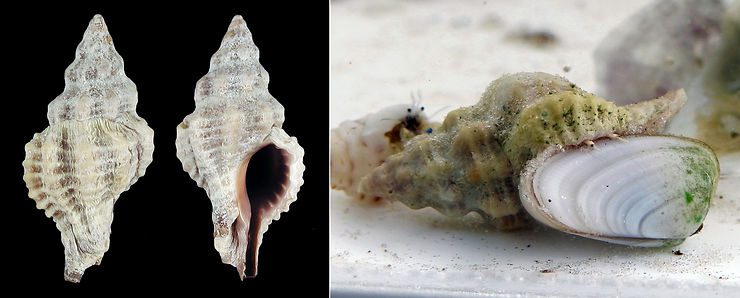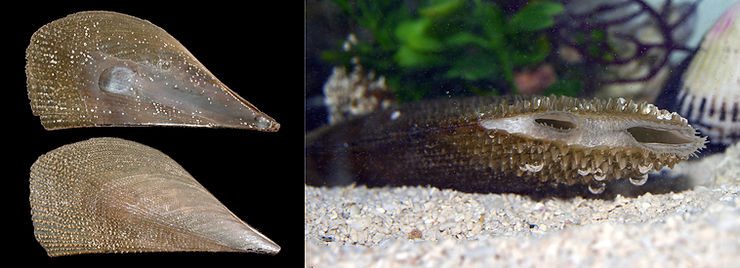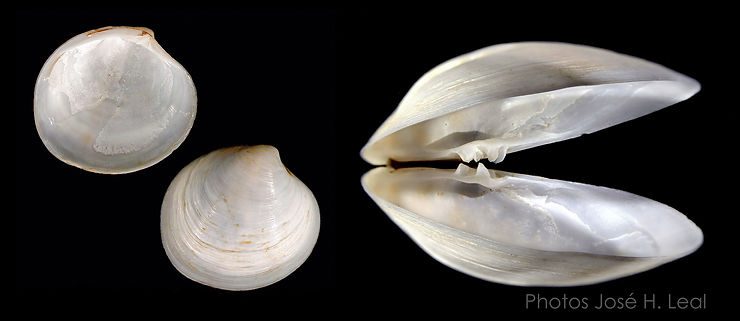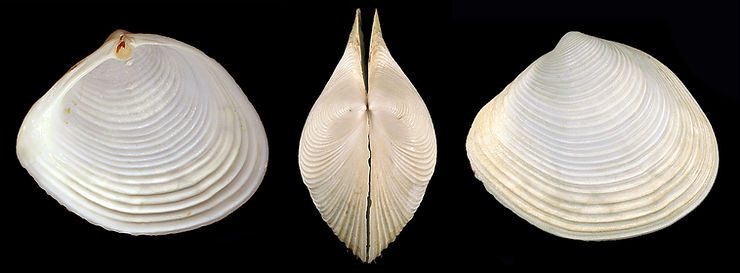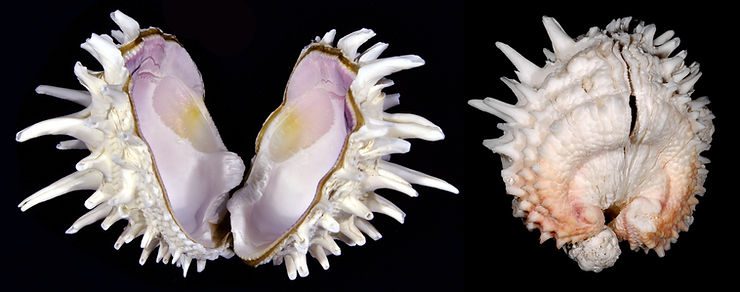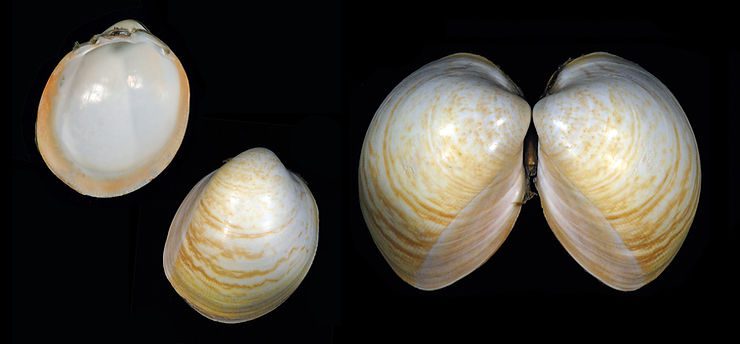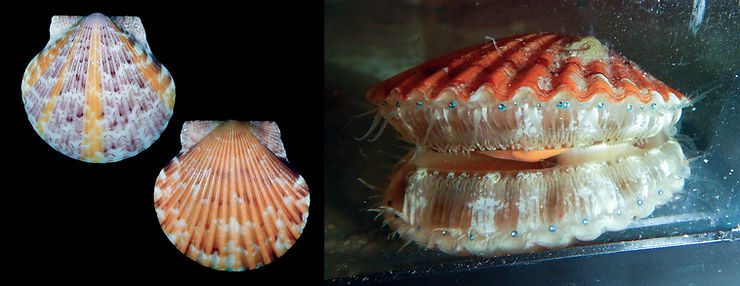
The Calico Scallop
This is another long overdue tribute to a lovely local bivalve: the Calico Scallop, Argopecten gibbus (Linnaeus, 1758). Because of the range of colors and diverse patterns on their shells, Calico Scallops are one of the species that catch immediate and irrevocable attention of casual or first-time collectors walking the beaches of Southwest Florida.Calico Scallops are members of the Scallop family Pectinidae. Many Scallops are capable of short (and fast) bursts of swim, which they perform by squ
